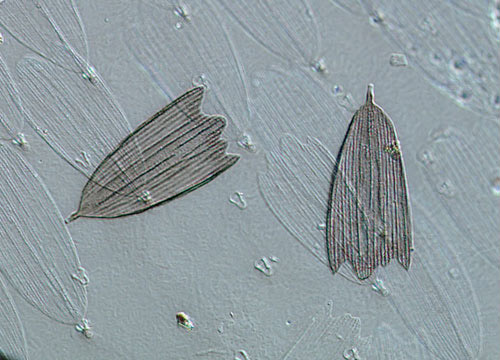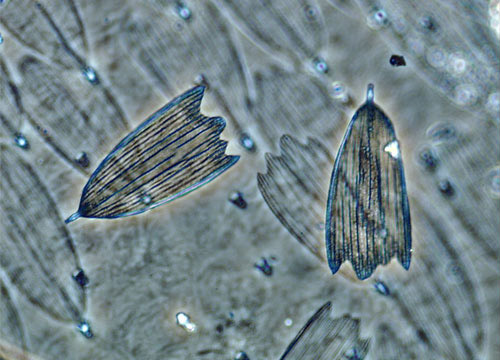Giant Leopard Moth Wing Scales
The giant leopard is one of the most eye-catching moth species. With large white wings covered in blue or black spots, the giant leopard moth soars through the night skies of eastern North America. Exclusively nocturnal, the adults feature ultrasound-sensitive ears, which offer protection against bats, as well from terrestrial predators.
 DIC
DIC
 Phase
Phase
Phase
The female giant leopard moth is much larger than the males of her species and can be differentiated by her dark brown or yellow abdomen marked with black spots and broad bluish bands. After dark, the sedentary female moth extends a scent gland from the tip of her abdomen and releases her airborne pheromones. Night-flying males zigzag their way to the receptive female, picking up the gradient of chemical attractants with their well developed, long, thin, curled antennae. After mating, the males fly off to seek another mate, while the female oviposits her eggs on a wide variety of host plants, including violets, plantains, cherries, maples, and willows.
DIC
When disturbed or threatened, the giant leopard moth larva curls up into a black, hairy ball and reveals its bright red intersegmental rings. The large caterpillar's spiracles are also ringed in bright red, which completes a warning coloration that discourages predation. The giant woolly bear's long black setae cause skin irritations and, in some cases, more serious allergic reactions when handled. Each hair bears numerous minute barbs and the defensive compounds stored in the hollow setae work by entering scratches and other wounds created by the barbs.













